The Enchanting World of Morning Glory Ipomoea

Step into the dazzling, sunlit realm of the Morning Glory Ipomoea—a climber that's as vivacious as the sunrise itself. With an explosion of funnel-shaped blooms that unfurl like nature's most exquisite trumpets, these flowers come in hues as spellbinding as a painter's palette. Rich purples, delicate pinks, serene blues, and the purest whites decorate each vine, transforming any garden into a masterpiece. Imagine this fast-climber, reaching skyward to an awe-inspiring 10 feet, adorned with heart-shaped leaves that flutter in the breeze—a poetic symphony of movement and colour. It's little wonder that this plant has captured the hearts of UK gardeners, becoming a cherished beacon of summer that elegantly drapes over trellises and fences, weaving privacy and beauty into one.
A Guardian of Sunlight
Seize the day alongside the Morning Glory Ipomoea, whose zeal for sunlight mirrors our own. Championing the light from dawn to dusk, these flowers are at their best when basking in the glory of full sunlight for 6-8 hours each day. They settle well into many soil types as long as it offers decent drainage, showcasing their robust spirit and adaptability—a true testament to the resilience nature teaches us.Quenching Its Thirst
Regular watering is part of the ritual to maintain the moist, yet well-drained soil this climber craves, much like the morning dew that graces the dawn. But be cautious, for soggy grounds do not a happy Morning Glory make. Remember to water at the root to prevent leafy ailments from taking hold, protecting the plant's verdant splendour.Creating a Living Tapestry
Provide your ipomoea with a sturdy lattice or a rugged fence to conquer, and watch as it crafts a verdant tapestry before your very eyes. Train your vibrant companion by carefully guiding its tendrils upwards, promoting a world of vertical beauty in your own backyard. For those who prefer pots to beds, ensure your container offers freed om to drain, paired with a potting mix that encourages firm growth. A regular feeding of balanced fertiliser will keep flowers flourishing, their brightness a constant delight.The Art of Pruning
To sustain this climbing marvel in resplendent health and beauty, wIeld your shears with artful precision, curbing its fervent reach. Snipping away the spent blooms will summon a wave of fresh petals, each eager to unfurl and dance in the sunlight. Regularly deadheading these radiant adventurers also curbs their wanderlust, preventing the dispersal of seeds that can make the Morning Glory a trifle too adventurous. In respecting its potential exuberance, we maintain a harmonious balance within our cherished gardens and protect the surrounding natural tapestries. Join us as we indulge in the sight of the Morning Glory Ipomoea—a winged gem that lifts the spirits and nurtures the soul. By welcoming such a companion into our gardens, we pledge to care for it with fervour, ensuring its story is one of mutual admiration and enduring allure.An Overview of a Morning Glory Ipomoea and its benefits in the UK
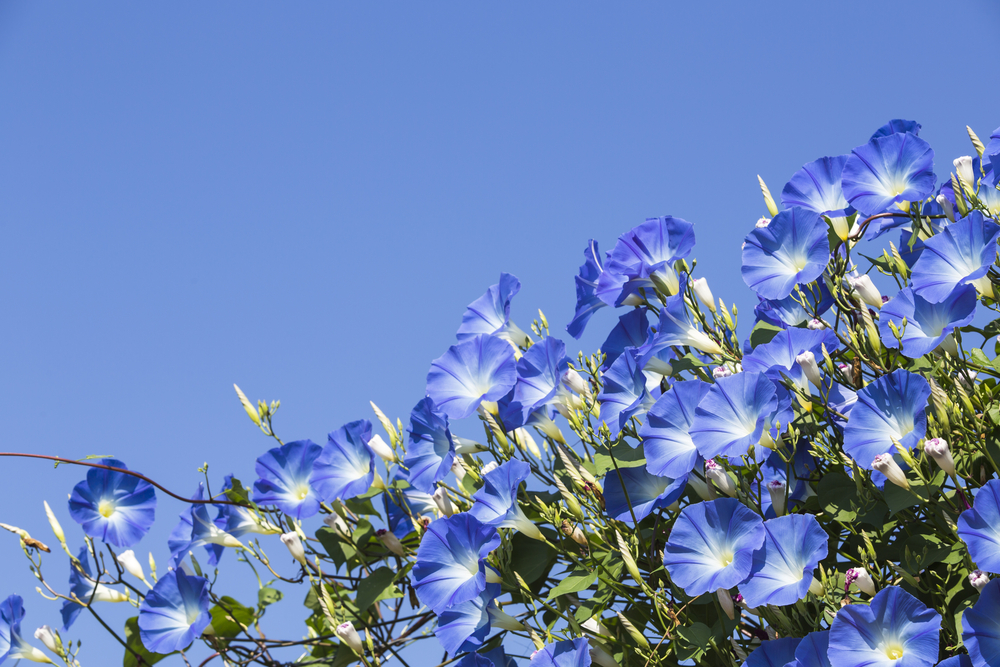
Embrace the Enchantment of Morning Glory Ipomoea: A Floral Marvel with Unseen Wellness Perks
In the vibrant tapestry of the garden, there lies a gem often overshadowed by its notorious reputation as an enthusiastic climber. Yes, we're talking about the Morning Glory Ipomoea, a plant that not only captivates with its stunning blooms but also harbours a treasure trove of health benefits waiting to be discovered. Let's embark on a journey to uncover the secrets of this floral marvel, tailored for our green-thumbed compatriots in the UK.
Morning Glory Ipomoea: An Overview
Belonging to the Convolvulaceae family, Morning Glory Ipomoea paints the early hours with its vivid, trumpet-shaped flowers. Native to Mexico and Central America, this plant has gracefully twined its way into gardens worldwide, adapting to various climates with ease. Its species range from the vibrant Ipomoea purpurea to the water-loving Ipomoea aquatica, each bringing its unique splash of colour and charm. Morning Glories are renowned for their rapid growth and hearty blooms that greet the dawn with enthusiasm, only to shy away as the sun sets. This ephemeral beauty, coupled with its resilience and versatility, makes it a beloved addition to any garden.The Hidden Health Gems of Morning Glory Ipomoea
Beyond its aesthetic allure, Morning Glory Ipomoea hides within its tendrils a host of health benefits that have been explored in various scientific studies and traditional practices:- 1. Weight Loss Ally Ipomoea aquatica, commonly known as water spinach or kang-kung, is a variety of Morning Glory that has garnered attention for its low-calorie content and high dietary fiber. These properties make it an excellent addition to weight loss diets, promoting satiety and reducing the urge to snack on less healthy options.
- 2. Digestive Health Booster The dietary fiber found in Morning Glory Ipomoea also plays a pivotal role in supporting digestive health. It aids in regular bowel movements and helps prevent common digestive issues such as constipation and bloating.
- 3. Anti-inflammatory Properties Research has hinted at the anti-inflammatory properties of certain compounds found in Morning Glory species. These compounds can help reduce inflammation in the body, potentially benefiting conditions such as arthritis and other inflammatory diseases.
Incorporating Morning Glory Ipomoea into Your Diet and Routine
Embracing the benefits of Morning Glory Ipomoea in your daily life can be as simple as integrating it into your diet or adopting it as part of your green sanctuary. Here are some suggestions:- - Culinary Delights: For those adventurous in the kitchen, the leaves of Ipomoea aquatica can be stir-fried, blanched, or added to soups for a nutritious boost.
- - Garden Oasis: Planting Morning Glory Ipomoea in your garden not only enhances its beauty but also allows you to harness its health benefits right from your backyard.
- - Herbal Teas: While not as common, exploring herbal teas made from Morning Glory leaves could offer a soothing way to enjoy its health perks.
Conclusion: A Call to Green Action
The Morning Glory Ipomoea stands as a testament to nature's ingenuity, blending visual splendour with wellness benefits in a single package. As UK gardeners and wellness enthusiasts, incorporating this versatile plant into our lives offers a unique opportunity to enhance both our gardens and our health. So, why not let the Morning Glory Ipomoea climb its way into your heart? Whether through culinary experiments, gardening projects, or simply appreciating its beauty, this plant is ready to unfold its petals and reveal its secrets to those willing to explore. Embrace the enchantment of Morning Glory Ipomoea and let it guide you towards a healthier, more vibrant life.Introducing a Morning Glory Ipomoea - Facts and Figures
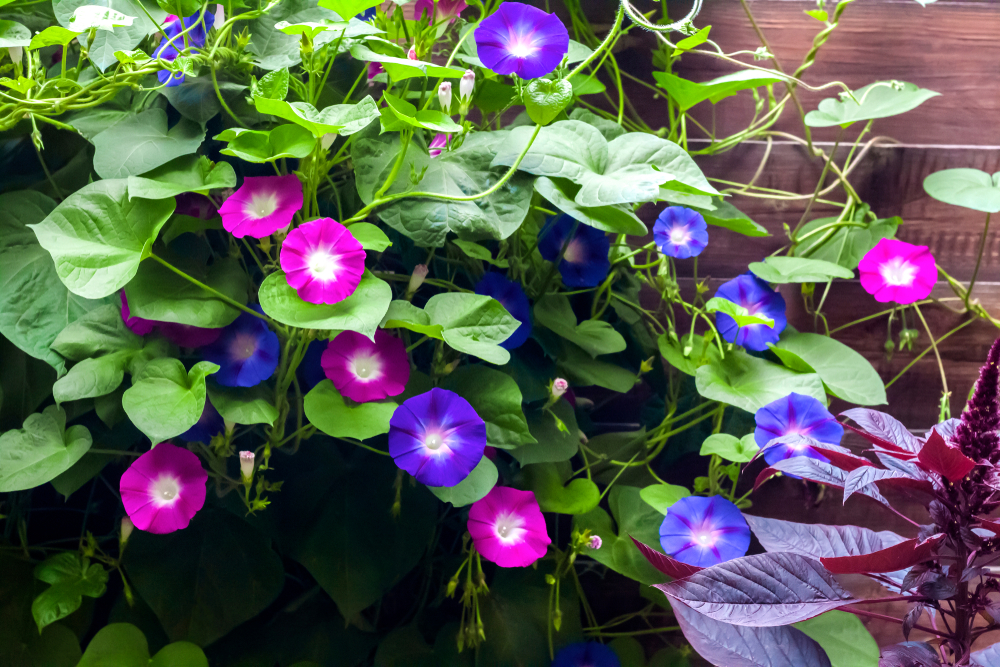
Discover the Dazzling World of Morning Glory Ipomoea
In the enchanting realm of flora, there exists a vine that captures the imagination with its radiant blooms and spirited growth - the Morning Glory Ipomoea. A member of the Convolvulaceae family, this genus encompasses over a thousand species, but today, let's focus on the kind that adorns many a UK garden with its mesmerizing presence.
A Portrait of Ephemeral Beauty
The Morning Glory Ipomoea, with species like *Ipomoea purpurea*, *Ipomoea tricolor*, and *Ipomoea aquatica*, presents a spectacle of heart-shaped leaves and funnel-shaped flowers that seem to dance in the morning light. The blossoms, spanning a palette of blues, purples, pinks, and whites, unfurl at dawn to greet the sun, only to close again as dusk falls. This daily performance, alongside their rapid growth and ability to climb, makes them a captivating sight in any landscape. Originating from the warm climes of Mexico and Central America, these climbers have adapted to a variety of environments, thriving in the temperate to warm conditions found across the UK during the growing season. They prefer a sunny spot, where their flowers can bask in the glory of the morning sun, embodying their name.A Symphony of Uses
Gardeners and landscapers cherish the Morning Glory Ipomoea for more than its visual allure. Its fast-growing nature and vibrant display make it an ideal choice for covering trellises, fences, and walls, or for adding a splash of color to containers and hanging baskets. Beyond aesthetics, varieties like *Ipomoea aquatica* play a role in culinary traditions, especially in Asian cuisines, where its shoots and leaves are savored as a nutritious vegetable. In the ecosystem, Morning Glories serve as more than just eye candy. Their flowers offer nectar to pollinators such as bees and hummingbirds, playing a part in the pollination ballet. However, it's worth noting that some species can be invasive outside their native range, potentially outcompeting local flora if not managed carefully.Myths and Cultural Tapestries
Morning Glories are wrapped in a cloak of myth and symbolism. In various cultures, they represent love, affection, and the ephemeral nature of life, echoing the fleeting beauty of their blooms. Japanese folklore celebrates them in the tale of The Weaver Girl and The Cowherd, where the flowers symbolize the lovers' brief annual meeting.Cultivation and Care: A Gardener's Guide
To weave the magic of Morning Glories into your garden, consider these tips:- - Soil and Site: Plant in well-draining soil in a location that receives full sun for most of the day. Morning Glories thrive in warmth and light.
- - Watering: Keep the soil consistently moist but not waterlogged. These vines enjoy a drink, especially during dry spells.
- - Feeding: A balanced, slow-release fertilizer applied in the spring can support vigorous growth. However, be cautious not to over-fertilize, as this can encourage foliage over blooms.
- - Support: Provide structures like trellises, fences, or strings for these enthusiastic climbers to grasp and ascend.
- - Pest Control: Keep an eye out for common pests like aphids and spider mites. A gentle spray of water or insecticidal soap can help manage these unwanted visitors.
The History of a Morning Glory Ipomoea in the UK
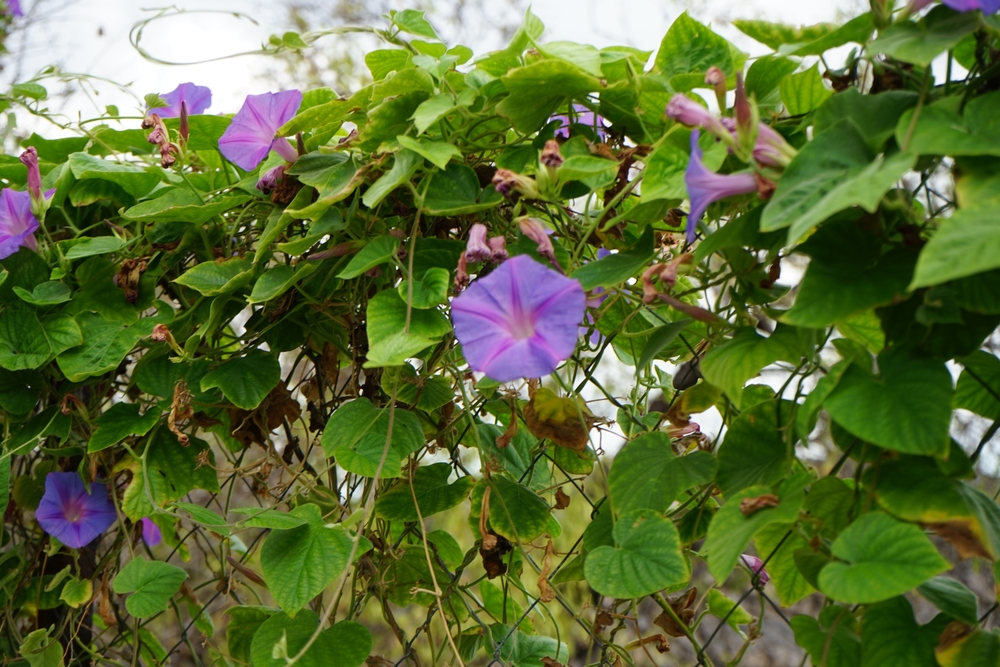
The Enchanting Saga of Morning Glory Ipomoea in the United Kingdom
Once upon a time, in the verdant lands of the United Kingdom, a floral visitor from across the seas made an entrance that would forever change the botanical tapestry of this historic realm. This visitor was none other than the Morning Glory Ipomoea, a vine of unparalleled beauty and versatility. Let's unfurl the petals of history and explore the captivating journey of this exotic plant in the UK.
A Journey Across Time and Seas
Our story begins in the early 17th century when the Morning Glory Ipomoea, with its roots in the tropical and subtropical regions of the Americas, voyaged across the ocean blue to grace the British Isles. It was introduced as an ornamental in 1621, a botanical gem that quickly captivated the hearts of gardeners and botanists alike. The vibrant blooms and spirited growth of Ipomoea purpurea, in particular, found a special place within the ornamental gardens of England.A Flourish of Color and Life
In the centuries that followed, the Morning Glory Ipomoea wove itself into the fabric of British gardening culture. Its ability to climb and cover unsightly fences, trellises, and walls with a cascade of vivid flowers made it a popular choice among gardeners seeking to add a touch of enchantment to their outdoor spaces. From the regal purples of *Ipomoea purpurea* to the heavenly blues of *Ipomoea tricolor*, these vines offered a palette of colors that could transform any garden into a living masterpiece.A Dance with the Ecosystem
As with any tale, our story is not without its complexities. The introduction of Morning Glory Ipomoea brought with it questions of ecological impact. In some areas, certain species have shown invasive tendencies, competing with native flora for resources. However, the story is not all one of caution; these vibrant climbers have also played a role in supporting local wildlife, offering nectar to a variety of pollinators, including bees and butterflies, thus contributing to the biodiversity of the region.Adapting to a Changing World
In recent years, the narrative of the Morning Glory Ipomoea in the UK has been tinged with the challenges of climate change. Warmer temperatures and shifting weather patterns have influenced the growth and flowering times of these plants, presenting both opportunities and challenges for UK gardeners. On one hand, milder winters allow for a longer growing season; on the other, extreme weather events pose new threats to their survival.Conservation and Care
In response to these evolving challenges, conservation efforts and gardening practices have adapted to ensure that the Morning Glory Ipomoea continues to thrive in the UK. Gardeners are encouraged to select non-invasive varieties and to manage growth carefully to prevent unwanted spread. By doing so, they contribute to the preservation of this plant's legacy, ensuring that future generations can continue to enjoy its beauty.A Living Legacy
Today, the Morning Glory Ipomoea remains a cherished part of the UK's horticultural heritage, a symbol of beauty, resilience, and the interconnectedness of our global ecosystem. Whether adorning a quaint cottage garden or climbing the walls of an urban oasis, this plant continues to inspire and enchant all who encounter its blooms. As we look to the future, the story of the Morning Glory Ipomoea in the UK serves as a reminder of the importance of thoughtful stewardship of our natural world. By nurturing these blooms, we not only enhance our own surroundings but also contribute to the rich tapestry of life that sustains us all.Understanding the Different Variations of Species of a Morning Glory Ipomoea, ideal for UK Conditions

Cairo morning glory (ipomoea cairica) a beautiful flower that creeps up walls
Originating from the warm and tropical regions of the Americas, the Morning Glory Ipomoea has captivated gardeners worldwide with its ethereal beauty and ease of cultivation. Known for their trumpet-shaped flowers that unfurl at dawn to greet the morning sun, these plants are true to their name. With a variety of species each offering unique colours and patterns, Morning Glories can add a touch of magic to any garden space.
Ideal Species for the UK Climate
While there are over a thousand species within the Ipomoea genus, let's focus on those that thrive particularly well in the temperate climate of the UK:-
Ipomoea nil "Japanese Morning Glory"
Offering a wider range of colours and patterns, including variegated and star-shaped blooms, this species adds an exotic flair to your outdoor space. -
Ipomoea purpurea - "The Versatile Beauty"
Starting with the star of the show, Ipomoea purpurea, or commonly known as the Common Morning Glory. This species is a true spectacle, with its heart-shaped leaves and trumpet-shaped flowers that come in an array of colors from deep purples to pinks, blues, and even whites. The flowers unfurl at dawn to greet the morning sun, creating a breathtaking display in any garden. According to sources like plantsinparticular.co.uk, it's one of the most popular and widely grown Morning Glories in the UK, thanks to its versatility and the stunning variety of color forms available. -
Ipomoea tricolor "Heavenly Blue" - "The Sky's Embrace"
Next, we have the ethereal Ipomoea tricolor 'Heavenly Blue', a variety that captures the essence of a clear summer sky. With its large, radiant blue flowers and white throats, this species brings a piece of heaven down to earth. Its ability to thrive and flower profusely, especially in warm summers, makes it a cherished choice among British gardeners, as highlighted by plantura.garden. -
Ipomoea 'Grandpa Ott' - "The Dazzling Royal"
For those looking for a deeper hue, Ipomoea 'Grandpa Ott' enchants with its velvety, deep purple flowers adorned with a striking star-shaped throat in pink and white. Though it produces smaller flowers compared to 'Heavenly Blue', 'Grandpa Ott' grows exceptionally well in the UK climate, offering a regal touch to any garden space.
When is the Best Time of the Year to Plant a Morning Glory Ipomoea in the UK

Ah, the Morning Glory Ipomoea, a true jewel in the crown of any British garden! This enchanting climber, with its trumpet-shaped blooms and heart-shaped leaves, is a testament to nature's artistry. As a passionate botanist, I'm thrilled to guide you through the journey of cultivating these radiant beauties in your own slice of paradise.
Embracing the UK Climate
Firstly, understanding the climate and seasonal requirements of Morning Glory Ipomoea is key to unlocking its full potential. These sun-loving vines originate from warmer climates, but fear not, for they have shown remarkable adaptability and can thrive in the UK's variable weather, provided we cater to their needs with a touch of gardening finesse.The Ideal Planting Season
Patience is a virtue, especially when it comes to planting Morning Glories. Wait until the frost's last farewell, typically in late spring, when the soil warms up to at least 60°F (about 15°C). This warmth is a cue for the seeds to break dormancy and embark on their growth journey. The OSU Extension Service highlights the importance of soil temperature, indicating that warm soil is crucial for germination.Soil, Sunlight, and Space
Morning Glories are not overly fussy about soil but give them well-drained soil of average fertility, and they'll climb to the heavens for you. A spot that basks in full sun for most of the day is ideal, as noted by GrowVeg.com, ensuring your Morning Glories receive the light they crave for maximum flowering.Watering Wonders and Feeding Finesse
While Morning Glories can withstand dry conditions thanks to their drought-tolerant nature, consistent moisture, especially during their vigorous growth phase, will keep them happy and blooming. Water them deeply, allowing the soil to dry slightly between waterings to encourage strong root development. As for feeding, The Spruce recommends a low-nitrogen fertilizer every four to five weeks throughout the growing season to support their lush foliage and vibrant blooms without encouraging excessive leaf growth at the expense of flowers.Potential Pitfalls and How to Prevail
Be vigilant for common foes such as aphids and spider mites. A gentle spray of water or insecticidal soap can manage these pests. Also, be aware of their enthusiastic growth; Morning Glories can become invasive if not kept in check. Regular pruning and removing spent flowers before they seed will help control their spread.Sourcing Your Morning Glory Ipomoea
For high-quality seeds or seedlings, I recommend visiting reputable nurseries or garden centers, where you can also seek personalized advice. Online gardening forums and websites are treasure troves of information and sources for unique varieties.In Conclusion
Cultivating Morning Glory Ipomoea is a delightful endeavor that rewards patience and care with an abundance of beauty. By understanding their needs and providing the right conditions, you'll ensure these spectacular climbers flourish in your garden, creating a visually stunning display that captivates all who behold it. Remember, gardening is not just about growing plants; it's about growing connections—to nature, to ourselves, and to the world around us. Happy gardening!Choosing the Right Location to Plant Out your a Morning Glory Ipomoea
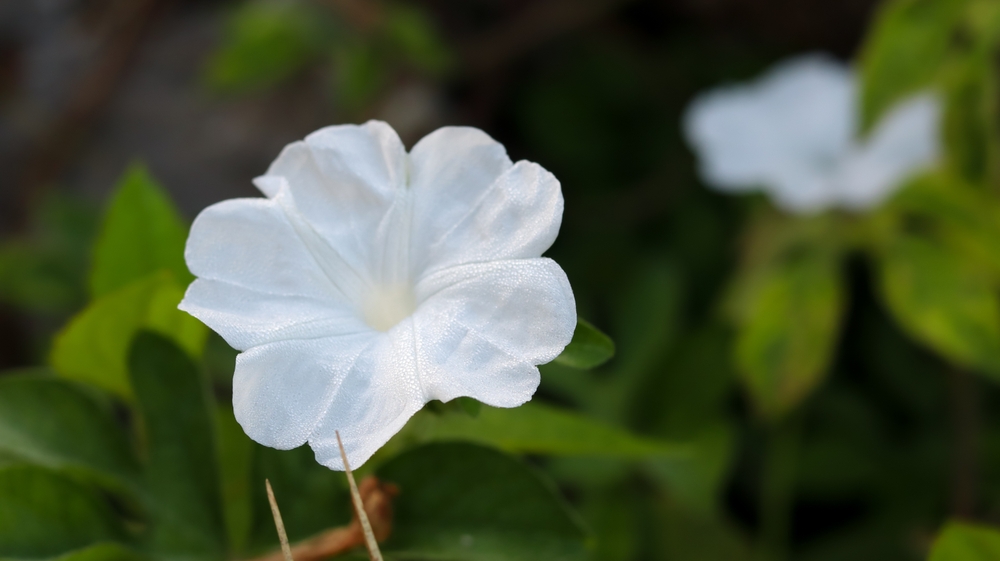
Ah, the quest for the perfect spot in your garden to plant the captivating Morning Glory Ipomoea! This vibrant climber, with its trumpet-shaped blooms and heart-shaped leaves, is not just a plant; it's a storyteller, painting your garden with strokes of blues, purples, and pinks as the sun rises. As a botanist with a passion for bringing gardens to life, I'm here to guide you through the magical journey of selecting the ideal location for these enchanting vines in the UK's unique climate and soil conditions.
A Symphony of Sunlight
First and foremost, our star performer, the Morning Glory Ipomoea, craves the spotlight – or should I say sunlight? These radiant beings are sun worshippers, requiring a stage that basks in full sun for at least 6 hours a day. The more sun they soak up, the more they reward you with their spectacular blooms and lush foliage. So, scout your garden for a spot where the sun generously smiles down. A south or west-facing location is your golden ticket.The Soil Stage
Soil is not just dirt; it's the foundation of life for your Morning Glories. They are quite the versatile performers, adapting to a range of soil types, but they sing the loudest in well-draining soil rich in organic matter. To determine your soil type, perform a simple test: Wet a handful of soil and try to form a ball. If it crumbles easily, you have sandy soil; if it forms a tight ball, you have clay.- - For sandy soil: Increase its water-retention ability by adding compost or well-rotted manure.
- - For clay soil: Enhance drainage and aeration by mixing in some horticultural grit and organic matter.
Water's Whisper and Temperature's Tale
While Morning Glories are somewhat drought-tolerant once established, they thrive on consistent moisture, especially during their growth phase. Ensure your chosen site doesn't turn into a swamp with every rain shower. Good drainage is key to preventing root rot and other waterlogged woes. Temperature plays a crucial role too. These climbers are summer's children, growing vigorously in the warmth. In the cooler UK climate, choosing a sheltered spot can protect them from chilly winds, giving them a microclimate to flourish in.Local Climate Considerations
The UK's weather can be a bit of a drama queen, with unexpected frosts and rainy spells. Keep an eye on local frost dates and be prepared to offer some protection (like a fleece) if a late cold snap threatens. Morning Glories are adept at climbing the temperature ladder quickly once the warmth of late spring and summer sets in.Ongoing Care and Love
Once your Morning Glories are happily settled in their perfect spot, they'll need some ongoing care to keep them healthy and vibrant:- - Support: Provide trellises or supports for them to climb. They're natural explorers and love to reach for the skies.
- - Watering: Keep the soil consistently moist but not soggy. During hot spells, a deep watering will quench their thirst.
- - Feeding: A balanced liquid fertilizer once a month will keep them in full bloom. Avoid high-nitrogen fertilizers, which can lead to more leaves and fewer flowers.
- - Pest control: Keep an eye out for aphids and spider mites. A gentle spray with water or insecticidal soap usually keeps these critters at bay.
Preparing the Soil for Planting the an Morning Glory Ipomoea

Ah, the enchanting journey of nurturing Morning Glory Ipomoeas in the UK – a true gardener's delight! These climbers, with their trumpet-shaped blooms that unfurl at the kiss of the morning sun, can transform any garden or balcony into a vibrant tapestry of color. But every masterpiece starts with a blank canvas, and in the world of gardening, that canvas is the soil. Let's embark on a step-by-step odyssey to prepare the perfect foundation for your Morning Glories, ensuring they ascend towards their full, glorious potential.
Selecting the Stage: The Soil
Morning Glories aren't divas; they're quite adaptable. However, they perform best in a well-draining, fertile soil that's a standing ovation in itself. Here's how to set the stage:- - For Garden Beds: Loamy soil is your star performer – it's the perfect blend of sand, silt, and clay. This trio provides a balance of drainage and nutrient retention fit for the roots of your Morning Glories to explore and thrive.
- - For Containers: In the confined space of a container, opt for a high-quality potting mix designed for flowers. These mixes are formulated to hold moisture yet drain well, ensuring your Morning Glories don't get "stage fright" from wet feet.
Procuring the Perfect Soil
You can find the soil you need at any reputable garden centre or nursery. For those looking to mix their own, combine garden soil, compost, and a dash of sand for that perfect loamy texture. Remember, the quality of your soil is the opening act for your garden's performance.Preparing the Soil: A Step-by-Step Guide
- 1. Tilling the Plot: Start by breaking up the soil to about a foot deep. This process aerates the soil, making it easier for roots to breathe and grow. If you're working with a container, ensure it has enough depth and good drainage holes at the bottom.
- 2. Enriching the Cast: Add organic matter to your soil – compost, aged manure, or leaf mould will do the trick. This is like giving your Morning Glories a backstage pass to a buffet of nutrients. Mix this in well with your existing soil.
- 3. Ensuring an Encore: Drainage is key to preventing waterlogged roots. If you're dealing with heavy clay soil, incorporate some horticultural grit or perlite to improve drainage. In containers, a layer of gravel at the bottom can help prevent water from pooling.
- 4. Blocking Unwanted Guests: Weeds are the photobombers of the gardening world; they can steal nutrients and water from your Morning Glories. Lay down a mulch barrier or use a landscape fabric to keep them at bay, ensuring your stars get all the spotlight.
- 5. The Watering Act: Morning Glories like their soil moist but not drenched. Water deeply to encourage root growth but allow the top inch of soil to dry out before watering again. In the UK's temperate climate, regular checks will help you gauge the perfect watering rhythm.
- 6. Final Touches: Before planting, give the soil one last check for texture and moisture. It should feel like a well-moistened sponge – not too wet, but not dry either.
Curtain Call
With the stage set and the soil primed, your Morning Glory Ipomoeas are ready to take their place in the spotlight of your garden or balcony. Remember, gardening is not just about the blooms and the foliage; it's about the journey, the learning, and the joy that comes with each new day. Be patient, be attentive, and soon, you'll witness the grand performance of Morning Glories unfurling under the UK sun – a spectacle of nature's beauty that rewards your hard work with its dazzling display. So, grab your gardening gloves, and let's turn that soil into a sanctuary where Morning Glories can sing their heart out. Happy gardening, fellow enthusiasts! May your garden be a stage where nature's miracles unfold in all their glory.How to Propagate a Morning Glory Ipomoea - List the most Common Methods

In the enchanting realm of gardening, where each plant tells its own vivid story, the Morning Glory Ipomoea emerges as a protagonist of unparalleled charm and beauty. With their ethereal blooms that greet the dawn with a burst of color, these climbers have captured the hearts of UK gardeners, inviting them into a world where nature's magic unfolds in their very backyards. Let's delve into the art of propagating these captivating characters, ensuring your garden becomes a stage for their mesmerizing performance.
The Tale of Seeds and Cuttings: A Dual Path to Propagation
The Morning Glory Ipomoea, in its quest to spread joy and color, offers two paths to propagation – through the whispers of seeds and the tales of cuttings. Each method holds its own magic, a promise of new growth and vibrant displays.-
1. The Whispering Seeds: Awakening New Life
Seeds, those tiny encapsulations of life, carry within them the blueprint of future splendor. To awaken these sleeping beauties, a simple yet transformative ritual is performed – soaking the seeds overnight. This act, as recounted by sources like Gardening Know How, softens the seeds' hard exterior, encouraging them to embrace the warmth and moisture they need to germinate. Following their nocturnal bath, plant the seeds about ¼ inch deep in fertile, well-draining soil, and watch as they embark on their journey towards the sun. -
2. The Tales of Cuttings: Cloning Magic
Cuttings, on the other hand, are snippets of stories waiting to continue. By taking about 10 cm of the stem from a healthy Morning Glory plant, you're capturing a moment in its life, ready to root and grow anew. Reddit users and enthusiasts on garden.org share insights into this process, suggesting the removal of the lower leaves before submerging the stem in water. Change the water weekly, and soon, roots will emerge, ready to be planted in soil, continuing the tale of growth and beauty.
Rooting in Water: A Miraculous Sight
The act of rooting Morning Glory cuttings in water is akin to witnessing a miracle unfold before your eyes. This method, embraced by gardeners from the Bay Area experimenting with Morning Glory vines, as shared on Houzz, showcases the plant's incredible adaptability and resilience. As roots develop, they reach into the water, drawing life and strength, until they're ready to transition to soil, where they'll anchor themselves and reach upwards towards their dreams.A Symphony of Growth: The Final Act
Whether through the whispering seeds or the tales of cuttings, propagating Morning Glory Ipomoea is an act of participation in nature's grand symphony. It's a testament to the gardener's role as both nurturer and witness to the miracles of growth. As your Morning Glories flourish, remember to support their climb towards the sun with trellises or stakes, and immerse yourself in the joy and wonder of watching them bloom, transforming your garden into a living tapestry of color and life. In the hands of a gardener, the Morning Glory Ipomoea's story is never-ending. It's a cycle of life, growth, and beauty that continues with each new propagation, each new season. So, dear UK gardeners, embrace these methods with enthusiasm and watch as your gardens become the setting for the most beautiful stories nature has to tell. Happy gardening!Step-by-Step Guide on How to Grow a Morning Glory Ipomoea from Seed

Ah, the Morning Glory Ipomoea, a plant that seems to capture the very essence of a British summer morning with its radiant blooms. Let's embark on a delightful journey, a step-by-step guide imbued with enthusiasm and vivid storytelling, to sow and nurture these enchanting climbers from seed. Envision your garden transforming into a canvas painted with the most vibrant hues of blues, purples, and pinks. Ready? Let's dig in.
-
Step 1: Dreaming of Morning Glories
Before we start, picture the spot in your garden where these beauties will flourish. Morning Glories adore the sun, basking in its glory for at least 6 hours a day. Find a sunny, well-draining spot that's just yearning for some colour and life. Imagine the tendrils reaching up towards the sky, painting your garden with their vivid blooms. -
Step 2: The Prelude - Preparing the Seeds
Every great tale begins with a prelude, and in our story, it involves awakening the seeds from their slumber. Soak the hard-shelled Morning Glory seeds in water overnight, as suggested by Gardening Know How. This simple act softens their exterior, whispering promises of growth and beauty. It's the first secret to a garden filled with colour. -
Step 3: Setting the Stage - Soil Preparation
According to Gardeners World, our next scene involves preparing the stage – your garden soil. Morning Glories thrive in well-draining soil enriched with the tales of compost or aged manure. Loosen the soil to about 8-12 inches deep, mixing in organic matter. This creates a fertile foundation, a welcoming embrace for the seeds you're about to plant. -
Step 4: Sowing the Seeds of Tomorrow
With the dawn of a new day, it's time to sow the seeds. Plant them 1/2 inch deep into the soil, spacing them about 8-12 inches apart, as per the wisdom of Eden Brothers. This gives each plant room to grow, to spread its wings and roots without crowding its neighbours. Cover them gently with soil and pat down, marking the beginning of their journey. -
Step 5: The First Act - Watering
Water is the elixir of life, and for our Morning Glory seeds, it's no different. Water the newly planted seeds gently but thoroughly, ensuring the soil is moist but not waterlogged. This act of nurturing is crucial, as it encourages the seeds to germinate and break through the soil, reaching up towards the sunlight. -
Step 6: Supporting Characters - Trellis and Supports
As our Morning Glories begin their ascent, they'll need support – both literally and figuratively. Install trellises or supports early on, as recommended by Grow Eden Brothers. These structures will guide their climb, allowing them to weave their tales vertically, creating a stunning display of floral artistry in your garden. -
Step 7: The Growth Journey
Patience is key in the garden. Keep the soil consistently moist, especially during dry spells. As your Morning Glories grow, they may need encouragement to twine around their supports. Gently guide them, and they'll grasp hold, continuing their upward journey. -
Step 8: The Blooming Spectacle
And then, one magical morning, you'll awaken to find the first blooms unfurling with the sunrise. It's a moment of pure joy, a reward for your care and patience. Continue to water and watch as more blooms appear, each one a testament to the beauty of nature and the power of gardening. -
Final Thoughts: A Garden Alive with Colour
Growing Morning Glory Ipomoea from seed is more than just a gardening project; it's an adventure, a journey of growth, patience, and ultimately, joyous reward. Your garden will become a living tapestry, woven with the vibrant colours of Morning Glories, each bloom a brushstroke of nature's artistry.
Step-by-Step Guide on How to Propagate a Morning Glory Ipomoea Using the Cutting Method
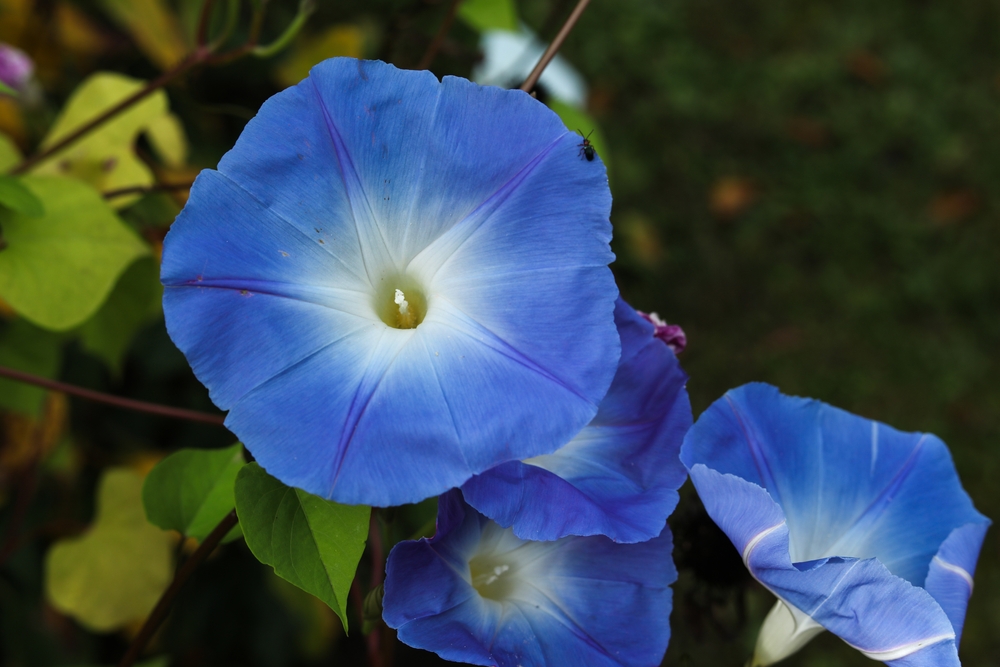
Ah, the Morning Glory Ipomoea, a veritable jewel in the crown of any British garden, with its trumpet-shaped blooms that herald the new day. If you're enchanted by the idea of multiplying these glorious climbers through the magic of propagation, you're in for a delightful journey. Let's embark on a step-by-step guide to propagate Morning Glory Ipomoea using the cutting method, drawing from a tapestry of knowledge woven by gardeners and experts alike.
-
Step 1: Select Your Champion
The first step in this green-fingered adventure is to select a healthy parent plant. Look for vibrant, disease-free Morning Glories that have shown themselves to be vigorous and floriferous. These will be your champions, ready to bestow their legacy upon their cuttings. -
Step 2: The Art of the Cut
Armed with sterilized shears - cleanliness being our watchword to prevent any unwelcome pathogens - aim for a cutting length of about 4-6 inches. Make your incision just above a leaf node, as this is where the magic happens. The leaf node is the cradle of potential, ready to burst forth with roots and shoots. -
Step 3: Preparing the Protagonist
Now, gently remove the lower leaves from your cutting, leaving only a few at the top. This focuses the plant's energy on rooting rather than sustaining foliage. Think of it as pruning back the script to leave only the most potent narrative - a tale of growth and rebirth. -
Step 4: Rooting in Water - A Liquid Cradle
Place your prepared cuttings in a vessel of water, ensuring the leaf nodes are submerged. Choose a clear container so you can witness the roots' debut performance as they emerge. Change the water weekly to maintain clarity and purity, providing an untainted stage for root development. -
Step 5: The Transition to Soil
Once the roots have taken center stage, extending at least an inch or two, it's time for their grand entrance into the soil. Prepare pots with well-draining potting mix, as Morning Glories are no fans of waterlogged conditions. Plant each cutting carefully, allowing them to acclimatize to their new home. -
Step 6: The Encore Performance
As your cuttings settle in, keep the soil consistently moist and place them in a bright spot, but away from the harsh midday sun. This gentle introduction to their new world encourages strong, healthy growth. In time, they'll be ready to join the main cast in your garden. -
Step 7: Applause and Admiration
With patience and care, your propagated Morning Glories will grow, climb, and eventually bloom, each flower a standing ovation for your efforts. Train them up trellises or allow them to cascade from pots and containers, creating a spectacle of color and life that captivates all who behold it.
The Step-by-Step Guide on How to Plant Out a Morning Glory Ipomoea in the UK
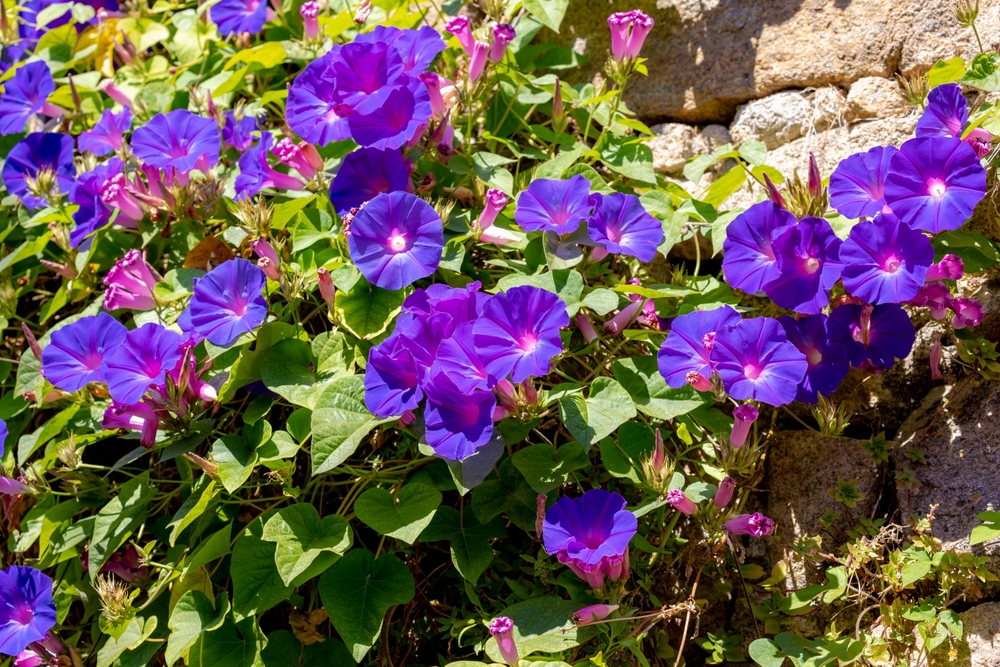
In the verdant theatre of the UK garden, where every leaf and petal plays a part in nature's symphony, there emerges a star that captures the imagination with its boundless vitality and stunning beauty - the Morning Glory Ipomoea. With blooms that unfurl at dawn to greet the day, this climber weaves tales of color and life into the fabric of your garden. Allow me to guide you through the enchanting process of planting out a Morning Glory Ipomoea, using a trellis or suitable support, ensuring your garden becomes a stage for this spectacular performance.
-
Act I: Setting the Stage
1. Time the Grand Entrance The first whispers of late spring, when the frost has taken its final bow, signal the time to introduce Morning Glory seeds to the earth. In the UK, this usually means waiting until late April or May, ensuring the soil is a welcoming, warm embrace for the seeds to germinate. - 2. Choosing the Perfect Backdrop Morning Glories are sun-chasers; they yearn for a place where the sun's rays can kiss them for at least 6 hours a day. Find a spot in your garden that basks in full sun, ideally south or west-facing. Here, against a trellis or another vertical support, they will perform their best.
-
Act II: Preparing the Ensemble
3. The Soil's Overture Your chosen spot needs well-draining soil, rich with the promise of life. Enrich the earth by working in plenty of organic matter such as compost or aged manure, creating a fertile foundation that will support the vigorous growth of your Morning Glories, as recommended by Gardeners' World. - 4. Introducing the Support Before the seeds make their entrance, ensure your trellis or support structure is firmly in place. This could be a simple trellis, a sturdy fence, or an elegant arch. The Morning Glory vines will twine themselves around these structures, reaching upwards towards the sun.
-
Act III: The Planting Performance
5. The Seed's Prelude To hasten the seed's awakening, immerse them in a warm water bath overnight. This softens the hard outer shell, whispering promises of growth. The next day, they'll be ready for their debut in the soil. - 6. Sowing the Seeds of Tomorrow Plant the seeds about 1cm deep and gently cover with soil, as suggested by The Sunday Gardener. Space them approximately 6 inches apart along the base of your trellis or support. This spacing allows each plant room to grow without overcrowding, ensuring a dazzling display.
-
Act IV: Nurturing the Performance
7. Watering the Dream Water your newly planted seeds with a gentle touch, ensuring the soil is moist but not waterlogged. Morning Glories prefer consistency, so keep the soil evenly moist as the seedlings establish themselves and begin their ascent. - 8. Guiding the Stars As the vines reach out, they may need a gentle nudge to embrace the trellis. Encourage the tendrils onto the support, guiding them as they climb. This early support ensures a robust and beautiful vertical display.
-
Act V: The Encore
9. The Fertilizer Applause Once your Morning Glories have established themselves, a light application of a balanced, slow-release fertilizer will encourage vigorous growth and abundant blooms. However, tread lightly, as too much nitrogen can lead to more leaves than flowers. - 10. The Final Bow: Maintenance Keep an eye out for aphids and spider mites, employing a gentle spray of water or insecticidal soap to keep these pests at bay. Removing spent flowers can encourage further blooming, ensuring the show goes on throughout the summer.
Curtain Call
With patience, care, and a dash of gardening magic, your Morning Glory Ipomoea will transform your garden into a living spectacle of color and movement. As they climb towards the heavens, twining around their chosen supports, these climbers remind us of the beauty and vitality that nature bestows upon those willing to nurture it. So, dear UK gardeners, let your heart be light and your spirit willing. The journey of planting and growing Morning Glory Ipomoea is a rewarding adventure, filled with moments of wonder and awe. May your gardens flourish, and may the Morning Glories weave their tales of color and joy into every corner. Happy gardening!How Far apart must a Morning Glory Ipomoea be Planted?
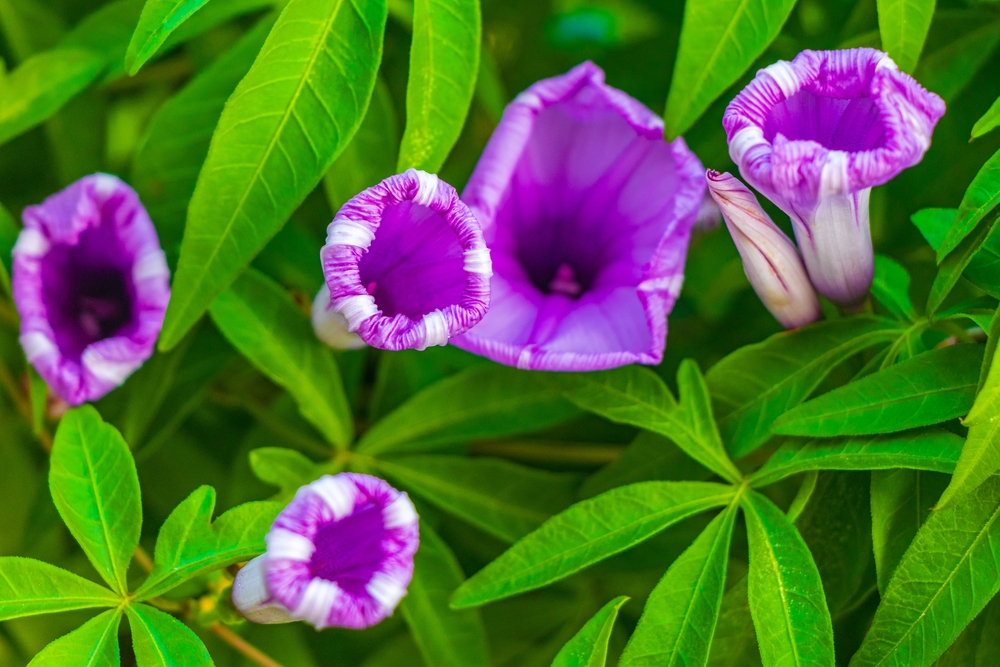
In the grand tapestry of the British garden, where each plant and flower plays its part in a symphony of color and life, Morning Glory Ipomoea emerges as a true virtuoso. With its tendrils reaching towards the heavens and blooms that unfurl with the dawn, it's a spectacle that captures the heart of any gardener. As we delve into the art of planting this enchanting climber, a question arises, echoing through the garden: How far apart must Morning Glory Ipomoea be planted to ensure a performance that leaves us spellbound? The answer, my fellow gardening aficionados, lies in understanding the nature of our star performer. Morning Glory Ipomoea is a vigorous climber, eager to stretch its vines and embrace the sun. To give each plant the stage it deserves, spacing is key. Let's explore the guidance provided by the chorus of voices from the gardening world.
The Spacing Overture
According to the harmonious advice found on *The Spruce*, seeds should be sown about 1/4 inch deep, with a few inches between them to start. However, for those envisioning rows of Morning Glories, akin to a choir lined up for a performance, a spacing of six inches will ensure each plant has room to flourish.A Pot of Vibrant Harmonies
For those who prefer the ensemble of Morning Glories contained within the bounds of a pot, *Gardeners' World* suggests planting three to five plants spaced evenly around a large pot, ideally a minimum of 30-40 cm wide and deep. This arrangement allows each Morning Glory the space to showcase its beauty without crowding the stage.The Varietal Crescendo
Diving deeper into the repertoire, *Harvest to Table* and *Growing in the Garden* offer insights into the broader range of Morning Glory varieties. They recommend spacing Morning Glory 3 to 15 feet apart, depending on the variety, with seeds planted directly in soil. For vines, planting seeds or transplants 8-12 inches apart (20-30 cm) will allow each to reach up to 15 feet tall, creating a magnificent vertical display.A Symphony in Bloom
With these insights, it becomes clear that the spacing of Morning Glory Ipomoea is not just a matter of logistics; it's an integral part of the gardening composition. Whether you're sowing seeds directly into the soil, arranging a pot for a burst of color, or planning a vertical spectacle, giving each plant the space to grow is akin to arranging musicians in an orchestra, ensuring each note can be heard in its full glory. So, dear UK gardeners, as you prepare to weave the Morning Glory Ipomoea into your garden's narrative, remember that spacing is the key to a breathtaking performance. With each plant given room to unfurl its blooms, your garden will become a stage for a daily dawn chorus, a spectacle of color and life that celebrates the magic of gardening. Happy planting, and may your gardens flourish with the beauty of Morning Glories.Tips for Caring for Your Newly Planted a Morning Glory Ipomoea
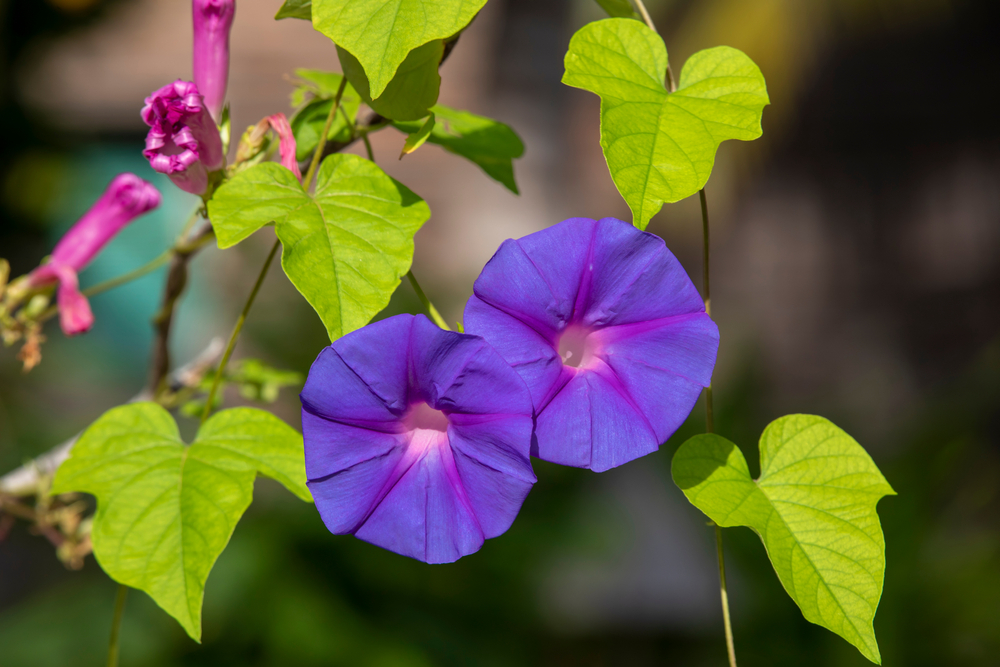
Ah, dear UK gardening enthusiasts, you've embarked on a wondrous journey by planting Morning Glory Ipomoea, a climber that dances with the sun and enchants with blooms that mirror the sky at dawn. Now, the tale continues as we nurture these spirited vines into a spectacle of unrivaled beauty. Let me guide you through the essential care tips, weaving together expertise, enthusiasm, and the magic of gardening to ensure your Morning Glories thrive.
Watering: The Essence of Life
Imagine each water droplet as a whisper of encouragement, urging your Morning Glories to grow. In the early stages, consistency is key. Keep the soil moist but not waterlogged, as Morning Glories are akin to Goldilocks – they prefer conditions that are just right. During particularly dry spells, an extra drink will be much appreciated, helping them weave their green and floral tapestry across your garden.Feeding: The Banquet of Growth
About a month after planting, it's time to host a banquet for your climbing beauties. A balanced, slow-release fertilizer is the guest of honor, providing the nutrients needed for vigorous growth and bountiful blooms. But beware, dear gardeners, for overindulgence in nitrogen-rich fare can lead to lush leaves at the expense of flowers. Moderation is the key to a balanced feast.Support: The Dance Partners
As Morning Glories begin their ascent to the heavens, they'll need partners in this vertical ballet. Trellises, fences, or strings become their companions, guiding their twirls and leaps skyward. Introduce these supports early, encouraging your climbers to grasp hold and begin their enchanting dance towards the sun.Pruning: The Artistic Sculpt
While Morning Glories are known for their vivacious growth, a gentle sculpting can enhance their performance. Deadheading spent blooms encourages further flowering, ensuring the show goes on. If your Morning Glories start to overstep their bounds, a thoughtful trim can help maintain harmony in the garden tableau.Pest Patrol: Guardians of the Garden
Keep a watchful eye for aphids and spider mites, uninvited guests that wish to feast on your Morning Glories. A gentle spray of water or insecticidal soap acts as the knights defending the realm, ensuring your climbers continue to flourish without hindrance.Winter Care: The Final Act
As the curtain falls on the growing season, and the cooler air whispers of change, it's time to bid farewell to this year's performance. In the UK, Morning Glories are annuals, completing their life cycle in one glorious season. Collect seeds from the most vibrant performers, storing them away for next year's show. Then, clear away the spent vines, making room for new stories to unfold in your garden.Encore: The Cycle Continues
With each season, the story of your Morning Glory Ipomoea takes on new chapters, filled with growth, challenges, and triumphs. By following these care tips, you're not just tending plants; you're nurturing a living spectacle, a testament to the joy and wonder of gardening. So, dear UK gardeners, let your hearts be light and your spirits high as you care for your Morning Glories. May your gardens be ever vibrant, a canvas painted with the hues of dawn, and may the melodies of nature fill your days with beauty and inspiration. Happy gardening!A Comprehensive Guide to Fertilizing the a Morning Glory Ipomoea
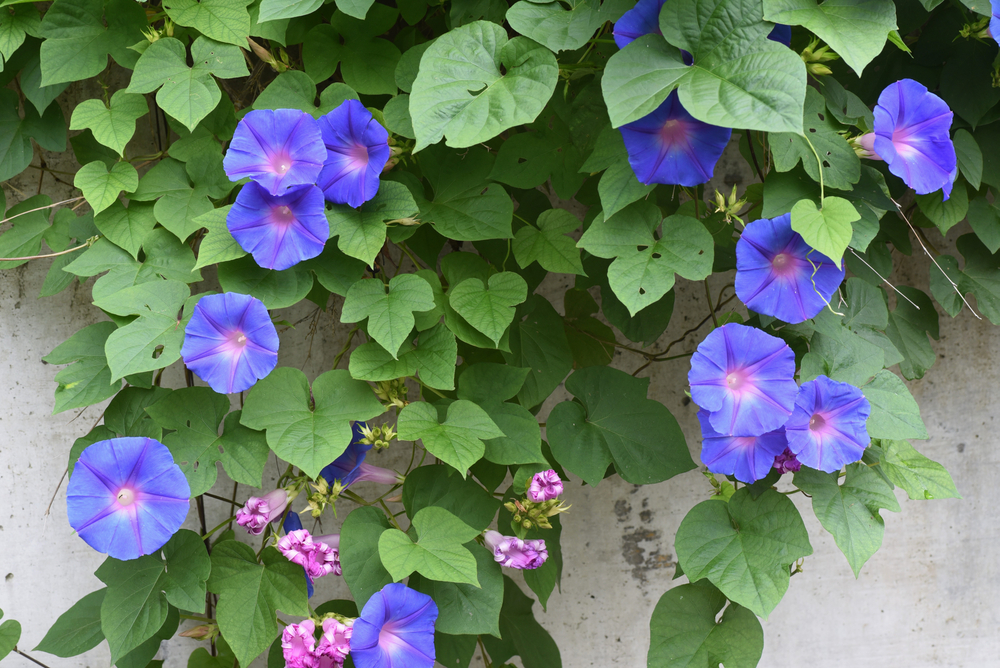
Oh, the enchanting Morning Glory Ipomoea, a true herald of the British summer dawn with its vibrant blooms that capture the very essence of morning's first light. As these climbers ascend towards the skies, painting trellises and garden walls with hues of celestial blue, radiant purples, and vivid pinks, the question of nourishment arises. How does one best feed this botanical performer to ensure a spectacle of blooms? Fear not, for I have delved into the depths of horticultural wisdom to bring you a comprehensive guide on fertilizing your Morning Glory Ipomoea.
The Quest for the Perfect Fertilizer
In the realm of Morning Glories, the adage "less is more" holds a kernel of truth, especially when it comes to fertilization. These vigorous climbers are known for their resilience and ability to flourish even in soils that are less than ideal. However, to coax out the most vibrant blooms and lush foliage, a balanced approach to feeding is key.Choosing Your Potion
A fertilizer with a higher level of phosphorus is recommended, as phosphorus is the champion of bloom production. Organic options, such as those mentioned by gardening enthusiasts on platforms like, include formulations like Dr. Earth's 5-5-5, where nitrogen, phosphorus, and potassium exist in harmony, encouraging both growth and flowering without leading to an overabundance of leaves at the expense of flowers.The Timing of the Feast
The timing of fertilizer application is much like the careful orchestration of a symphony – it requires precision and attention to the rhythms of growth. Begin by enriching the soil with a light application of your chosen balanced organic fertilizer prior to planting. This initial boost lays the groundwork for healthy early growth. As the season progresses and your Morning Glories begin to establish themselves, a monthly feeding during the growing season will ensure they have the nutrients needed to climb higher and bloom brighter. Yet, be cautious, for as sources like, too much nitrogen can lead our Morning Glories astray, leading them to produce more foliage than flowers.The Method of Application
When applying fertilizer, whether it be a granular organic mix or a liquid feed, ensure it is spread evenly around the base of the plant, avoiding direct contact with the leaves and stems. Water thoroughly after application to help distribute the nutrients into the soil, allowing them to reach the roots where they're most needed.A Final Note of Caution
Remember, dear gardeners, that while our Morning Glories may yearn for a touch of nourishment to reach their full potential, they are also plants of humble origins, thriving in conditions where others may falter. Overfeeding can lead to a lush green sea with few blooms to speak of. Therefore, let moderation be your guide, and watch as your garden becomes a stage for the spectacular dance of Morning Glory blooms. In the tapestry of the garden, every plant plays its part, but with the right care and feeding, Morning Glory Ipomoea can truly sing. May your trellises be laden with flowers, and your mornings brightened by their glorious display. Happy gardening!How Fast does a Morning Glory Ipomoea Grow?
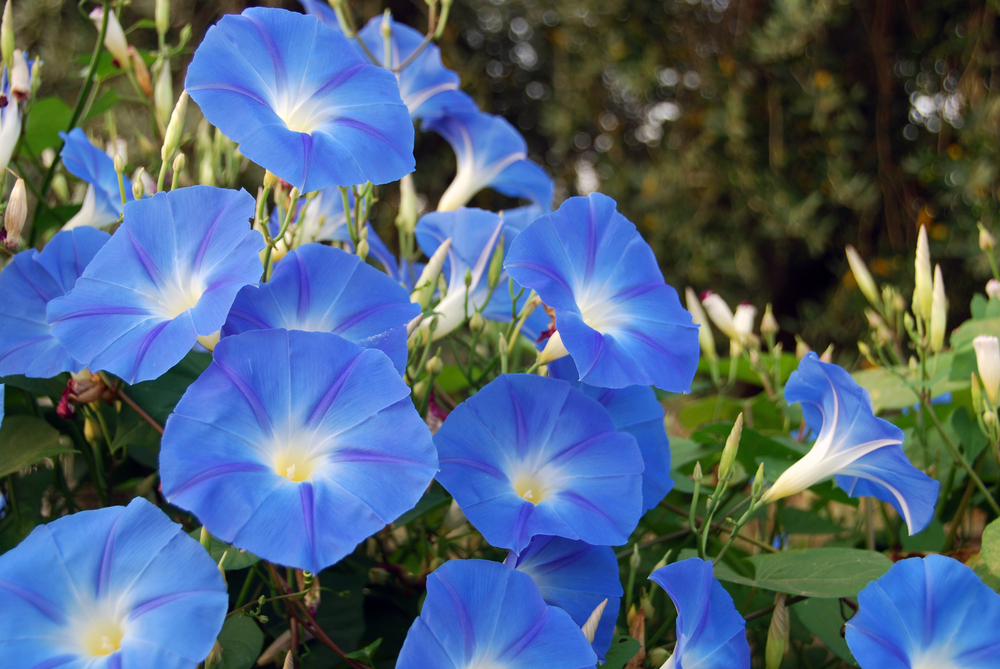
Ah, the Morning Glory Ipomoea, a true spectacle of the British garden, unfurling its blooms with the promise of dawn, a sight to awaken the soul and delight the senses. This climber, with its heart-shaped leaves and trumpet-shaped flowers, is not just a plant; it's a storyteller, narrating the passage of time with its rapid ascent towards the skies. Let's delve into the fascinating journey of the Morning Glory's growth, a tale of vigor and beauty that captures the imagination.
The Swift Ascent of Beauty
In the realm of the garden, few sights are as mesmerizing as the Morning Glory Ipomoea, reaching upwards with an enthusiasm that's almost palpable. According to the insightful observations at Gardenia.net, this fast-growing vine can twine its soft stems up to 6-10 feet (1.8-3 meters) tall in one season, and spread 3-6 feet (0.9-1.8 meters) wide, embodying the very essence of growth and expansion.A Timeline of Unfurling Splendor
From the moment the seedlings break through the soil, the Morning Glory Ipomoea embarks on a journey of rapid growth. As noted by the experts at The Spruce, common morning glory (Ipomoea purpurea) is among the easiest flowering vines to cultivate from seed, beginning its ascent soon after planting and continuing its climb throughout the warm months.Caring for Your Fast-Growing Companion
To accompany your Morning Glory on its swift journey, a few care tips will ensure it reaches its full potential:- Location: Choose a spot bathed in sunlight, as Morning Glories are sun worshippers, requiring at least 6 hours of direct sunlight to flourish.
- Soil: Well-draining soil enriched with organic matter provides a fertile foundation for rapid growth.
- Watering: Keep the soil consistently moist, especially during dry spells, to support the vine's vigorous growth.
- Support: Provide trellises or supports early on, guiding the Morning Glory's climb towards the heavens.
A Symphony of Blooms
As your Morning Glory ascends, you'll witness a daily symphony of blooms, each flower unfurling with the sunrise, only to close as the day wanes. This cycle of blooming adds a layer of enchantment, reminding us of the fleeting beauty of nature and the importance of cherishing each moment.In Conclusion
The Morning Glory Ipomoea stands as a testament to the wonders of nature, growing with such speed and grace that it transforms the garden into a living tapestry of color and movement. By understanding and supporting its rapid growth, you become not just a gardener, but a custodian of beauty, nurturing a spectacle that enchants with every bloom. So, dear UK gardeners, let your gardens be stages for the Morning Glory's performance, spaces where nature's artistry unfolds with each passing day. May your Morning Glories climb ever upwards, reaching for the sky with a vigor that inspires all who behold them. Happy gardening!The Common Diseases and Pests which Affect a Morning Glory Ipomoea
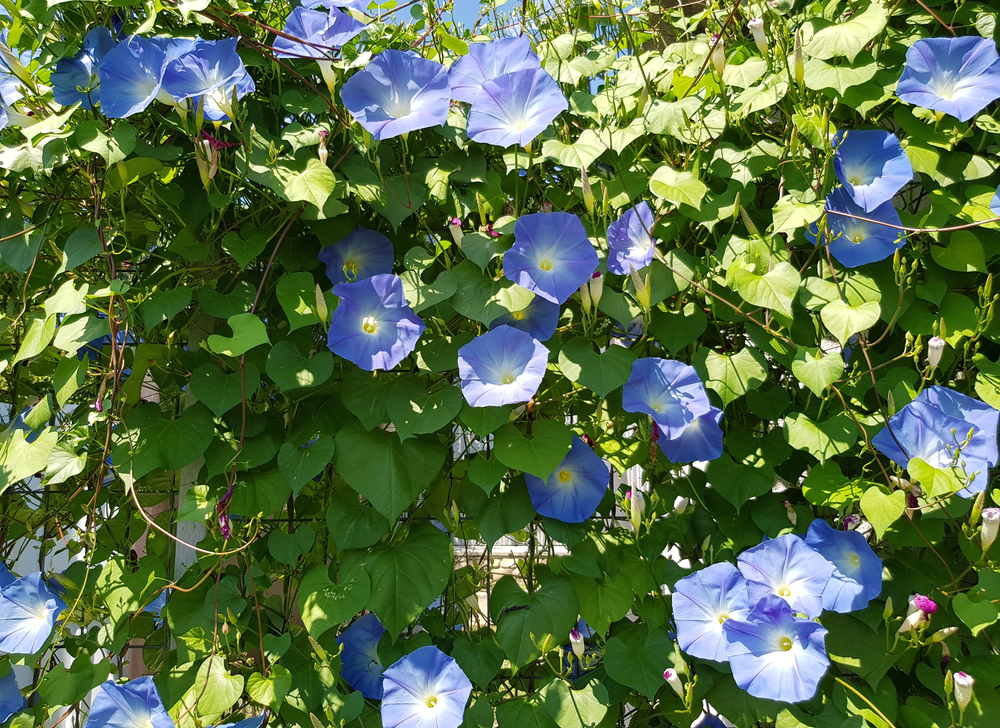
In the lush tapestry of a British garden, where the symphony of nature's palette unfolds with every dawn, the Morning Glory Ipomoea stands as a testament to the beauty and resilience of flora. Yet, even in this idyllic setting, challenges arise, casting shadows over the vibrant blooms of our beloved climber. Fear not, for with knowledge and care, these obstacles can be overcome. Let us journey together through the common diseases and pests that affect the Morning Glory Ipomoea, armed with solutions to ensure their continued splendor.
Diseases that Challenge the Morning Glory
- Cercospora Leaf Spot: This fungal disease manifests as spots with tan-colored centers surrounded by darker margins, marring the beauty of the leaves. It thrives in conditions of high humidity and can be mitigated by ensuring good air circulation around the plants and removing affected foliage.
- Rust: Rust diseases, including white rusts, attack the Morning Glory, presenting as rust-like pustules on infected plant tissue. These diseases flourish in wet conditions, making prevention a matter of reducing leaf wetness through proper watering techniques and site selection.
- Brown Spot: Characterized by distinctive brown, patchy spots on leaves and stems, Brown Spot is another fungal adversary. Combat this disease by avoiding overhead watering and removing infected plant parts to halt its spread.
Pests that Prey on the Morning Glory
- Cotton Aphid (Aphis gossypii): These tiny nuisances suck the sap from the plant, weakening it and potentially transmitting diseases. A strong jet of water can dislodge them, or organic insecticidal soaps can be used for control.
- Leaf Miners: Leaf miners burrow into leaves, leaving unsightly trails. Removing and destroying infested leaves early in the season can help prevent their spread. For severe infestations, consider using an appropriate organic pesticide.
- Leafcutter Bees: Although not a pest in the traditional sense, leafcutter bees can cause cosmetic damage by cutting circular pieces from Morning Glory leaves to build their nests. As they are beneficial pollinators, try to tolerate their presence or plant extra Morning Glories to compensate for the loss.
A Complete Guide to Pruning a Morning Glory Ipomoea in the UK
Why Do we Need to Prune a Morning Glory Ipomoea?

In the verdant tapestry of the British garden, where each plant plays its role in the grand ballet of nature, the Morning Glory Ipomoea emerges as a star performer. With its spirited vines reaching for the skies and blooms that capture the very essence of dawn, it brings a touch of magic to our green spaces. Yet, as with any star, a touch of guidance and care is needed to ensure it shines its brightest. Pruning, dear gardeners, is the key to unlocking the full potential of your Morning Glory, a practice steeped in wisdom and necessity.
The Art of Pruning: A Symphony of Growth and Bloom
Pruning is not merely a task; it is an art, a delicate dance between gardener and plant, ensuring the Morning Glory's performance is nothing short of spectacular. But why, you may ask, do we partake in this annual ritual? The reasons are many, each contributing to a healthier, more vibrant vine.-
1. To Encourage a Flourishing Performance
Morning Glories, much like the aspiring artists of the plant world, can sometimes lose their way, their energies dispersed in too many directions. Pruning guides them, focusing their vigor on the production of those mesmerizing blooms we so cherish. By pinching back the tips, especially when the vines are young, we encourage bushier growth, a multitude of climbing tendrils ready to adorn our gardens with their floral display. -
2. To Maintain the Grand Stage
Our gardens are stages for the countless dramas of nature, and without direction, even the most well-intentioned performers can overstep their bounds. Morning Glories, with their rapid growth, are known to eagerly embrace this stage, sometimes to the detriment of their fellow cast members. Pruning keeps these vivacious vines in check, ensuring harmony in the garden and preventing them from overwhelming other plants or structures. -
3. To Prevent the Shadows of Disease and Pests
In the dense foliage of an unpruned Morning Glory, darkness finds its haven, a breeding ground for the unseen foes of disease and pests. Pruning opens up the plant, allowing light and air to penetrate its depths, warding off these threats and ensuring the health and longevity of the vine. -
4. To Renew and Rejuvenate
As the season wanes and the final blooms fade, pruning becomes an act of renewal, preparing the Morning Glory for its next performance. Removing old, spent vines clears the stage for new growth, ensuring that with each passing year, the show is as breathtaking as the last.
In Conclusion: The Gardener's Ode
Pruning the Morning Glory Ipomoea, then, is an essential chapter in the gardener's ode to beauty, a testament to the symbiotic dance between human and nature. It is through this careful tending that we ensure our gardens remain places of wonder and delight, where Morning Glories unfurl their blooms in a daily celebration of life's enduring splendor. So, dear UK gardeners, let us embrace the shears with a sense of purpose and joy, knowing that with each snip, we are co-creators in the masterpiece that is our garden. May your Morning Glories thrive under your careful guidance, their blooms a testament to the love and care you bestow upon them. Happy gardening!When is the Best Time to Prune a Morning Glory Ipomoea?
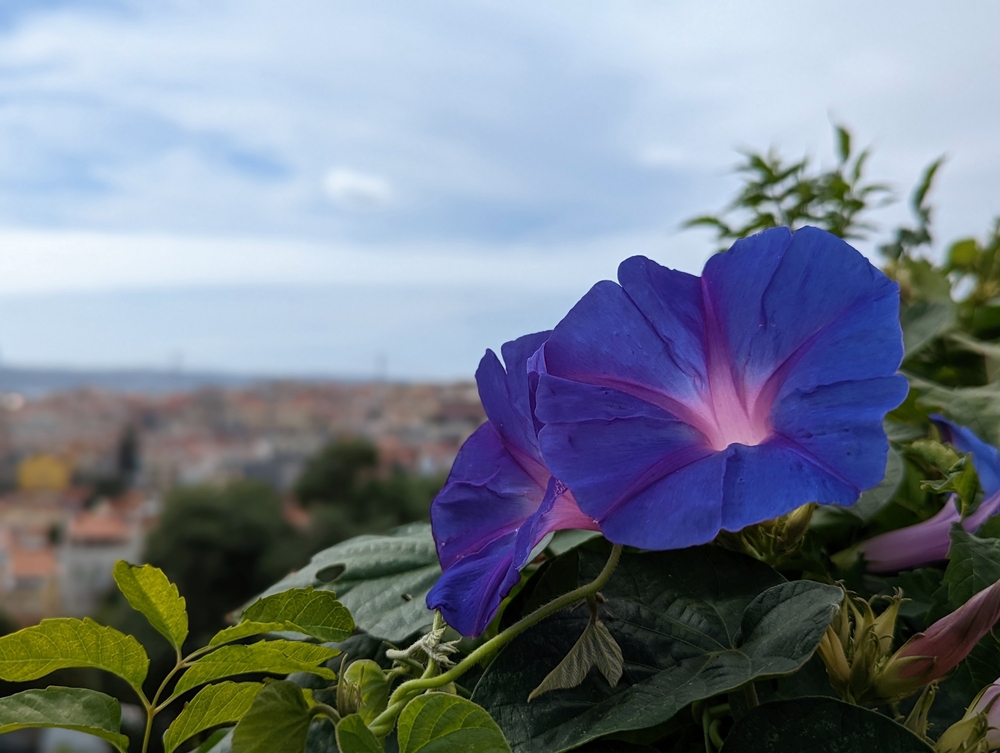
In the heart of the British garden, where each plant tells its own story, the Morning Glory Ipomoea weaves a narrative of beauty and resilience. As we embark on this gardening journey, let us turn our attention to an essential chapter in the life of our beloved climber: pruning. Pruning is not merely a task but a dialogue with nature, a moment of connection that shapes the garden's future. So, when is the best time to prune a Morning Glory Ipomoea? Let us explore together, drawing upon wisdom from the corners of the gardening world.
The Season of Sculpting: Summer's Call
As the crescendo of summer approaches, the Morning Glory Ipomoea basks in the warmth and light, stretching towards the sun. It is during this season of abundance that pruning becomes our tool of choice, a means to guide and enhance the vine's performance. According to Gardening Know How, the best time for this type of Morning Glory trimming is indeed in summer, a period when the plant's growth is most vigorous.A Continuous Dialogue: Throughout the Growing Season
Yet, the art of pruning is not confined to a single moment; it is an ongoing conversation. Gardeners' Path advises that Morning Glories should be pruned and deadheaded throughout the season to keep vines under control and encourage blooming. This regular engagement ensures that our climbers remain vibrant and full of life, their blooms a testament to our care.The First Whisper of Growth: Pinching Young Vines
Our dialogue with the Morning Glory begins early, when the vine whispers of its future potential with the sprouting of true leaves. The Toronto Master Gardeners recommend pinching back the vines when they have two sets of true leaves, removing the top one-half to three-quarters of an inch. This early intervention encourages bushier growth, setting the stage for a richer display of blooms as the season progresses.The Final Act: Post-Flowering Renewal
As the curtain begins to close on the growing season, our Morning Glory may still hold untapped potential. Pruning post-flowering can encourage robust growth and more blooms, breathing new life into the vine as it prepares for the final chapters of its annual performance. Using sharp shears for clean cuts on dead or damaged stems can rejuvenate the plant, ensuring it remains a focal point of beauty in our gardens.In Conclusion: The Gardener's Symphony
Pruning the Morning Glory Ipomoea is an integral part of the gardener's symphony, a practice that harmonizes growth, beauty, and health. By engaging in this dialogue at the right times—during the summer, throughout the growing season, upon the appearance of true leaves, and after flowering—we ensure that our gardens remain stages for nature's most exquisite performances. So, dear UK gardeners, let your shears be an extension of your will, sculpting the Morning Glory into a masterpiece of blooms and vitality. Happy gardening!A Step by Step Guide on How to Prune a Morning Glory Ipomoea

Ah, the Morning Glory Ipomoea, a jewel in the crown of British gardens, twining towards the heavens with blooms that echo the hues of dawn. This climber, with its heart-shaped leaves and trumpet-shaped flowers, is a vision of beauty. Yet, to ensure it continues to enchant us with its vigour and vitality, pruning becomes an essential act of care. Let us embark on a journey through the art of pruning this splendid vine, a step-by-step guide to sculpting your Morning Glory into a masterpiece of the garden.
-
Step 1: The Right Time
First, we must choose our moment with care. Summer, when the vine is in its full glory, is the ideal time for rejuvenation pruning. Yet, our dialogue with the plant is ongoing; throughout the growing season, we engage in gentle shaping and deadheading to encourage blooming and manage growth. -
Step 2: Preparation
Before we commence, let us prepare our tools. Sharp shears are our instrument of choice, ensuring clean cuts that heal swiftly. Sterilize your shears with alcohol to prevent the spread of disease, a simple yet vital act of precaution. -
Step 3: The Pruning Process
- Identifying the Target: Look for overgrown sections, dead or damaged stems, and areas where the vine has become too dense. These are your targets for pruning. According to Greg.app, identifying the node is crucial, as this is where new growth will emerge.
- Making the Cut: With your sharp shears in hand, make your cuts at a 45-degree angle just above a leaf axle or node. This angle encourages water runoff and minimizes the risk of disease. For rejuvenation pruning, you may cut back by one-third to one-half of the vine's length, focusing on shaping the plant and removing excess growth.
- Deadheading: To encourage more blooms, regularly remove old flowers before they form seed pods. This prevents unwanted self-seeding and directs the plant's energy towards producing more flowers.
Step 4: Post-Pruning Care
After pruning, give your Morning Glory some tender loving care. Water the plant deeply to help it recover from the shock of pruning, and consider applying a balanced fertilizer to support new growth. Monitor the plant for signs of stress and adjust your care routine accordingly.-
Step 5: Disposal of Cuttings
Dispose of the cuttings responsibly. Do not leave them on the ground, as they can harbor pests or diseases. Compost healthy cuttings, but discard any diseased or infested material in the trash to prevent spreading issues to other parts of your garden.
In Conclusion
Pruning your Morning Glory Ipomoea is not merely a chore; it is an act of creation, shaping the future splendour of your garden. Through this careful and considered practice, we ensure our Morning Glories remain vigorous, healthy, and ever enchanting, their blooms a daily herald of the beauty that surrounds us. So, dear UK gardeners, let your Morning Glories be a testament to your dedication and love for the garden. May each snip of the shears bring forth new life, new blooms, and new possibilities. Happy gardening!How Much can I Prune Away a Mature a Morning Glory Ipomoea
How to Hard Prune a Mature a Morning Glory Ipomoea

In the heart of a British garden, amidst the dew-kissed mornings and the whispering breezes, stands a venerable guardian of beauty - the mature Morning Glory Ipomoea. With its storied vines and blooms that capture the first light of dawn, it is a testament to the enduring dance between gardener and nature. Yet, even the most steadfast of our green companions may, over time, require a renewal, a chance to reclaim their vigour and grace. This is where the art of hard pruning, an act of both courage and care, comes into play. Let us embark on this transformative journey together, ensuring our Morning Glory emerges rejuvenated, ready to weave its magic once more.
-
Step 1: Understanding the Need
Hard pruning, dear gardeners, is not a task undertaken lightly. It is reserved for mature Morning Glories that have perhaps become overgrown or less vigorous, their blooms diminishing like stars at dawn's break. This process invigorates the plant, encouraging new growth and more abundant flowering. It is a testament to the resilience of nature, a reminder that from the old springs the new. -
Step 2: Timing is Everything
The timing of this grand gesture is crucial. Late winter to early spring, just as the plant begins to stir from its slumber but before new growth commences, is the ideal moment. This period of dormancy is a canvas awaiting the gardener's touch, a promise of rejuvenation that aligns with the awakening earth. -
Step 3: Preparing for the Task
Arm yourself with knowledge and the right tools. Sharp, clean pruning shears are your instruments of transformation, capable of making precise cuts that will heal swiftly. Sterilizing your tools before and after use cannot be overstated; it is a guardian act against disease, a shield for both plant and gardener. -
Step 4: The Act of Hard Pruning
- Approach with Respect: Observe your Morning Glory, acknowledging its years of service. Identify the main stems and consider how you wish to shape the plant's future growth.
- Make the Cut: With a steady hand and a compassionate heart, reduce the plant's size by cutting back the main stems to about one-third of their original length. Ensure each cut is clean and angled, just above a healthy bud or node, to encourage new growth in the desired direction.
- Thinning Out: Remove any dead, damaged, or diseased wood, along with any tangled or crossing branches. This step ensures the plant's energy is directed towards healthy, vigorous growth.
- Shape for the Future: Envision the plant's resurgence, shaping it not only for aesthetic appeal but for health and vitality. Your cuts are both an end and a beginning, a dialogue with the future.
Step 5: Aftercare is Love
Once the hard pruning is complete, your Morning Glory may appear diminished, but fear not. This is a temporary state, a pause before the crescendo. Water the plant deeply, offering it a drink to soothe the wounds of renewal. A balanced, slow-release fertilizer can provide the necessary nutrients for its comeback, laying the groundwork for a spectacular display.
In Conclusion: The Rebirth
Hard pruning a mature Morning Glory Ipomoea is an act of faith, a belief in the cycle of growth and renewal that defines our gardens. It speaks to the resilience within us all, the capacity for renewal and beauty. As the seasons turn, watch with pride as your Morning Glory responds, sending forth new shoots, leaves, and eventually, blooms that capture the essence of morning anew. So, dear UK gardeners, embrace this task with enthusiasm and care, knowing that you are not merely pruning a plant but nurturing a legacy of beauty and resilience. May your gardens flourish, and your Morning Glories shine brighter than ever before. Happy gardening!How to Care for a Morning Glory Ipomoea after Pruning
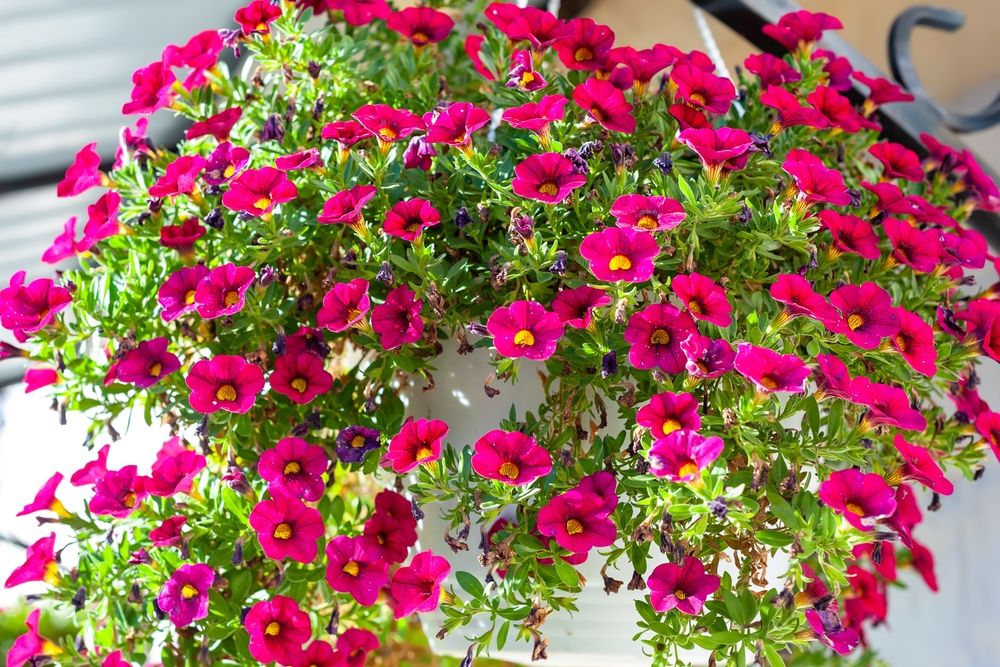
In the verdant realms of UK gardens, where every leaf and petal plays its part in the grand symphony of nature, the Morning Glory Ipomoea stands as a testament to the resilience and splendour of the botanical world. As gardeners, we are the conductors of this natural orchestra, guiding and nurturing our plants through the seasons. Pruning, a critical movement in our gardening symphony, rejuvenates and shapes our Morning Glories, ensuring their performance is nothing short of spectacular. But what follows is equally important: the aftercare. Let us delve into the art of caring for a Morning Glory Ipomoea after pruning, ensuring it thrives and blooms with renewed vigour.
A Refreshing Drink to Quench Thirst
Imagine your Morning Glory as a performer after a grand show, thirsty and in need of refreshment. Watering plays a pivotal role in the recovery process post-pruning. Give your plant a deep, soothing drink, allowing moisture to penetrate the roots, revitalizing the vine from within. This act of hydration is the first step towards encouraging new growth, helping the plant to bounce back with grace and strength.A Feast to Nourish and Energize
After pruning, your Morning Glory is in a state of renewal, ready to embark on a journey of growth and blooming. Now is the perfect time to offer a feast that nourishes and energizes. A balanced, slow-release fertilizer provides the essential nutrients needed for this resurgence. Opt for a formulation that supports root development and flowering, creating the ideal foundation for the magnificent blooms that are yet to come. Remember, moderation is key; too much fertilizer can lead to lush foliage at the expense of flowers.A Blanket of Mulch to Comfort and Protect
Mulching is akin to tucking your Morning Glory in with a comforting blanket. A layer of organic mulch around the base of the plant not only retains moisture, keeping the roots cool and hydrated, but also suppresses weeds and adds a layer of protection against pests and diseases. Furthermore, as the mulch breaks down, it enriches the soil with organic matter, enhancing the overall health of your vine.Sunlight and Space to Thrive
Post-pruning care also involves ensuring your Morning Glory has ample sunlight and space to thrive. These climbers adore the sun, basking in its rays to fuel their growth and bloom production. Position them in a spot where they receive plenty of light throughout the day. Additionally, consider the spacing; adequate room allows for air circulation, reducing the risk of fungal diseases and ensuring your Morning Glory can stretch and grow without restraint.Vigilance and Love: The Watchful Gardener's Eye
Finally, post-pruning care is imbued with vigilance and love. Keep a watchful eye on your Morning Glory for signs of new growth, pest infestations, or disease. Early detection and intervention can make all the difference, ensuring your plant remains healthy and vigorous. Remember, gardening is an act of love, a dialogue between gardener and plant, each responding to the other's care and attention. In conclusion, caring for a Morning Glory Ipomoea after pruning is an essential chapter in the life story of your garden. It is a period of recovery, renewal, and anticipation, laying the groundwork for future blooms that will dazzle and delight. So, dear UK gardeners, embrace this journey with enthusiasm and care, knowing that your efforts today will bring forth the beauty of tomorrow. May your Morning Glories flourish, their blooms a testament to the love and dedication you pour into your garden. Happy gardening!An Overview of Pruning a Morning Glory Ipomoea
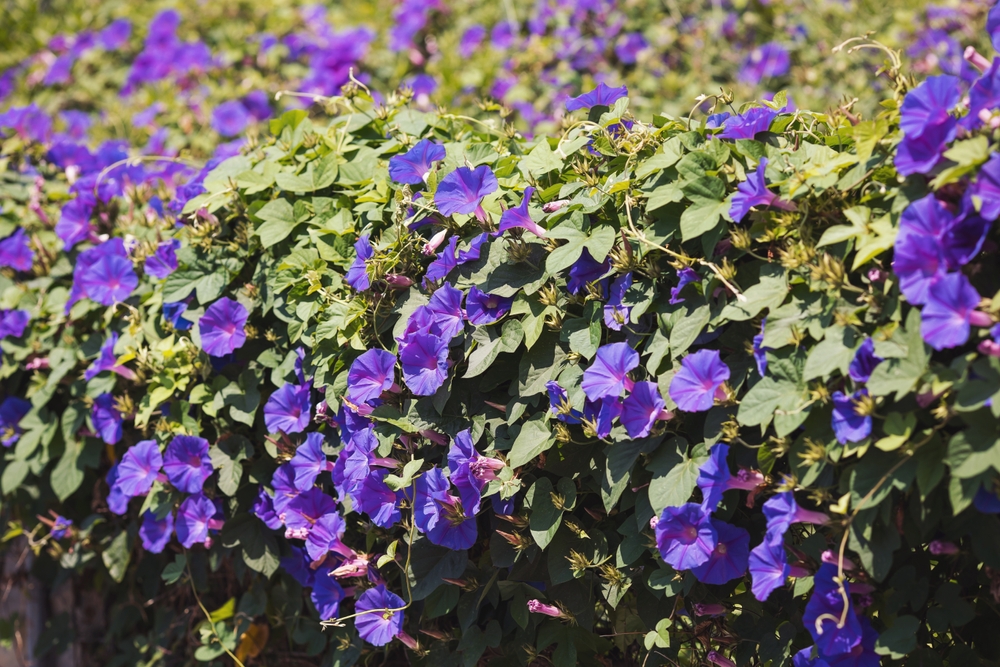
Ah, the Morning Glory Ipomoea, a true spectacle of the British garden, casting its tendrils towards the sky as if in a relentless pursuit of the sun itself. This climber, with blooms that mirror the hues of the breaking dawn, holds a special place in the hearts of UK gardeners. Yet, to ensure this botanical performer takes centre stage with the grace and vitality it deserves, one must master the art of pruning. Let us embark on a captivating journey through the world of pruning the Morning Glory Ipomoea, weaving together a tapestry of knowledge, enthusiasm, and step-by-step guidance to elevate your gardening experience.
The Prelude: Understanding Pruning
Pruning is not merely a task; it is an intimate dance with nature, a dialogue between gardener and plant. For the Morning Glory Ipomoea, pruning shapes destiny, directing energy towards vigorous growth and an abundance of blooms. It is a practice steeped in foresight, ensuring that our cherished climber dazzles onlookers with its floral symphony.-
Act One: The Timing
Timing, dear gardeners, is the conductor of this orchestral performance. Late winter to early spring, as the Morning Glory stirs from its slumber, offers a window of opportunity. This period, before the curtain rises on new growth, is when our pruning can most effectively influence the season's display. It's a moment filled with potential, a breath taken before the plunge. -
Act Two: The Method
Pruning the Morning Glory Ipomoea is a tale of precision and purpose. Armed with sharp, sterilized shears, we approach the task with both care and confidence. Our goal? To invigorate the plant, encouraging a lush canopy of leaves and a profusion of flowers.- Step 1: The Thinning Cut: Identify and remove any dead or damaged sections, clearing the stage for healthy growth. This act of removal is akin to editing a manuscript, leaving only the strongest narratives to flourish.
- Step 2: Pinching for Prosperity: Pinching back the tips of young vines encourages branching, transforming a solo performance into a chorus of blooms. This technique, applied early in the season, sets the tone for what's to come.
- Step 3: Shaping the Future: With strategic cuts, shape the vine to suit your garden's design. Whether guiding it along a trellis or allowing it to cascade freely, your vision becomes reality through these deliberate snips.
Act Three: Aftercare – The Encore
After pruning, the Morning Glory requires a period of nurturing to recover and thrive. A deep watering quenches its thirst, while a layer of mulch maintains moisture and temperature, acting as a protective blanket. Fertilization, judiciously applied, provides the nutrients needed for explosive growth and blooming.
Curtain Call: The Gardener's Reflection
As you stand back and survey your work, remember that pruning is but a chapter in the ongoing saga of your garden. It is an expression of care and intent, a testament to your role as both guardian and curator of beauty. The Morning Glory Ipomoea, with its renewed vigour and forthcoming blooms, is a living symbol of your dedication to the craft of gardening. So, dear UK gardeners, let the pruning of your Morning Glory be a journey of discovery, a blend of science and artistry. May your gardens thrive, your climbers reach new heights, and your blooms bring joy to all who behold them. Embrace this task with enthusiasm and watch as your Morning Glory transforms, a testament to the love and care poured into every cut. Happy gardening!Best Selling Gardening Products
Popular Gardening Sections

Problems
Identify Weeds in The Garden - How to deal with weeds. Diseases and Pest which harm your garden and plants, learn how to prevent, deter and erradicate your garden problems.
Garden Problems
Pruning
Pruning Guide. Shrubs flower better with correct pruning. Many illustrations and examples of what to do - and when. Includes evergreens, roses, flowering shrubs, spring flowering shrubs and pruning for stem effect. This is our most viewed and comprehensive section,
Pruning
Gardening Businesses
Gardening Businesses listed in the UK counties and USA states. County and State Listings of businesses involved in Garden supplies and services. If you wish to be added to the Directory, please send us your information. Having problems, use the search box
Businesses
Gardening
In this section you will learn about Gardening Basics, Containers, Landscaping, Propagation and Soil.
Gardening
Gardening Gifts
Gardening Gifts and Reviews, Read Before you Buy
- Gardening Gifts Ideas
- Gifts For Her
- Gifts For Men
- Power Tool Gifts
- Cheap Gifts
- Personalised Gifts
- Wildlife Gifts
- Family Gifts



